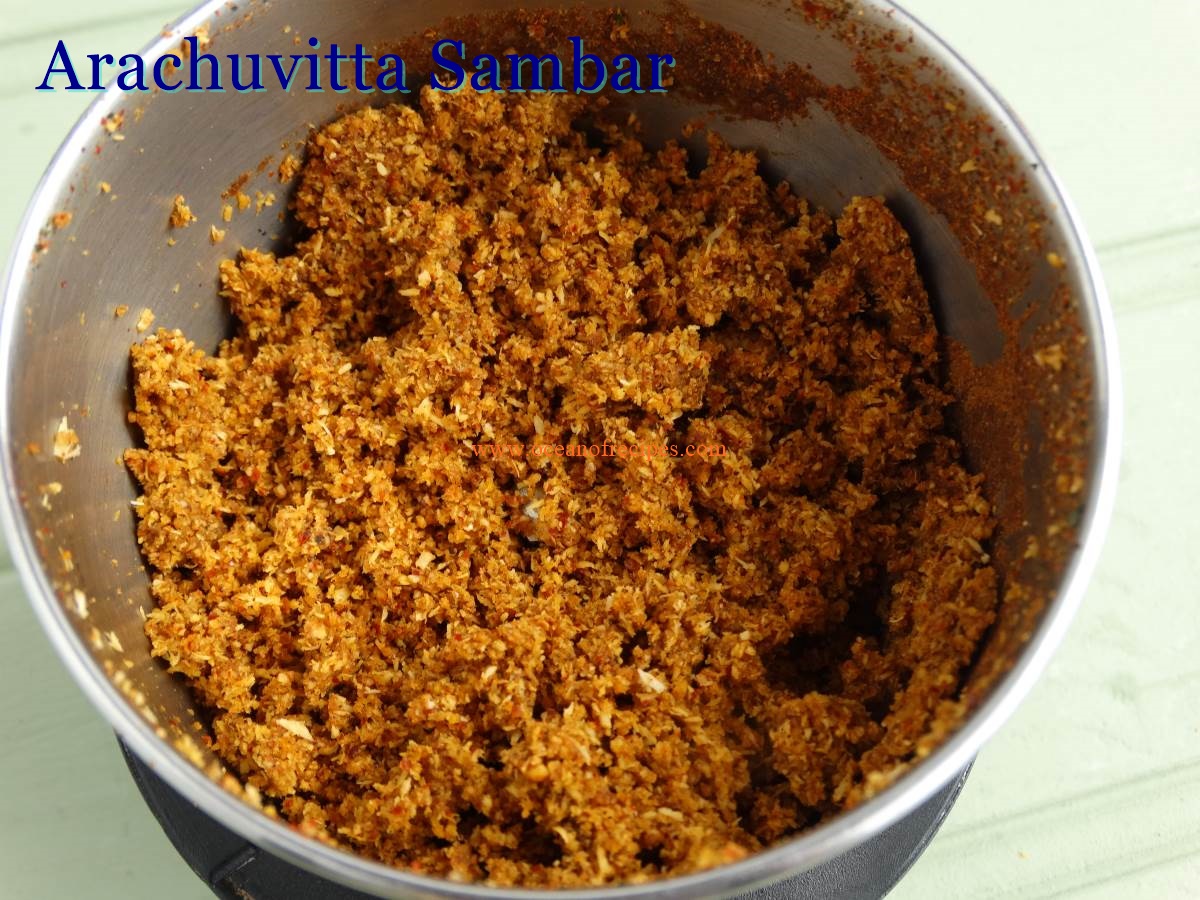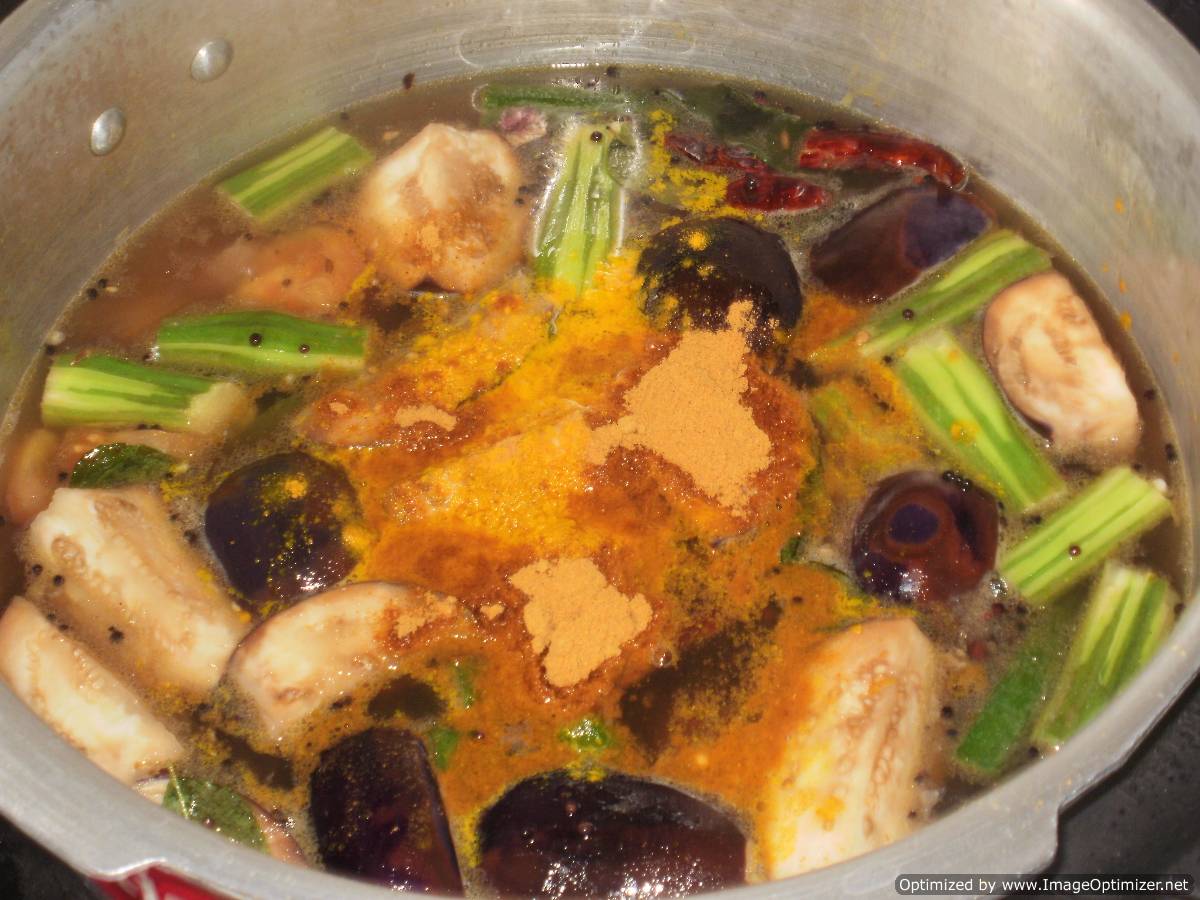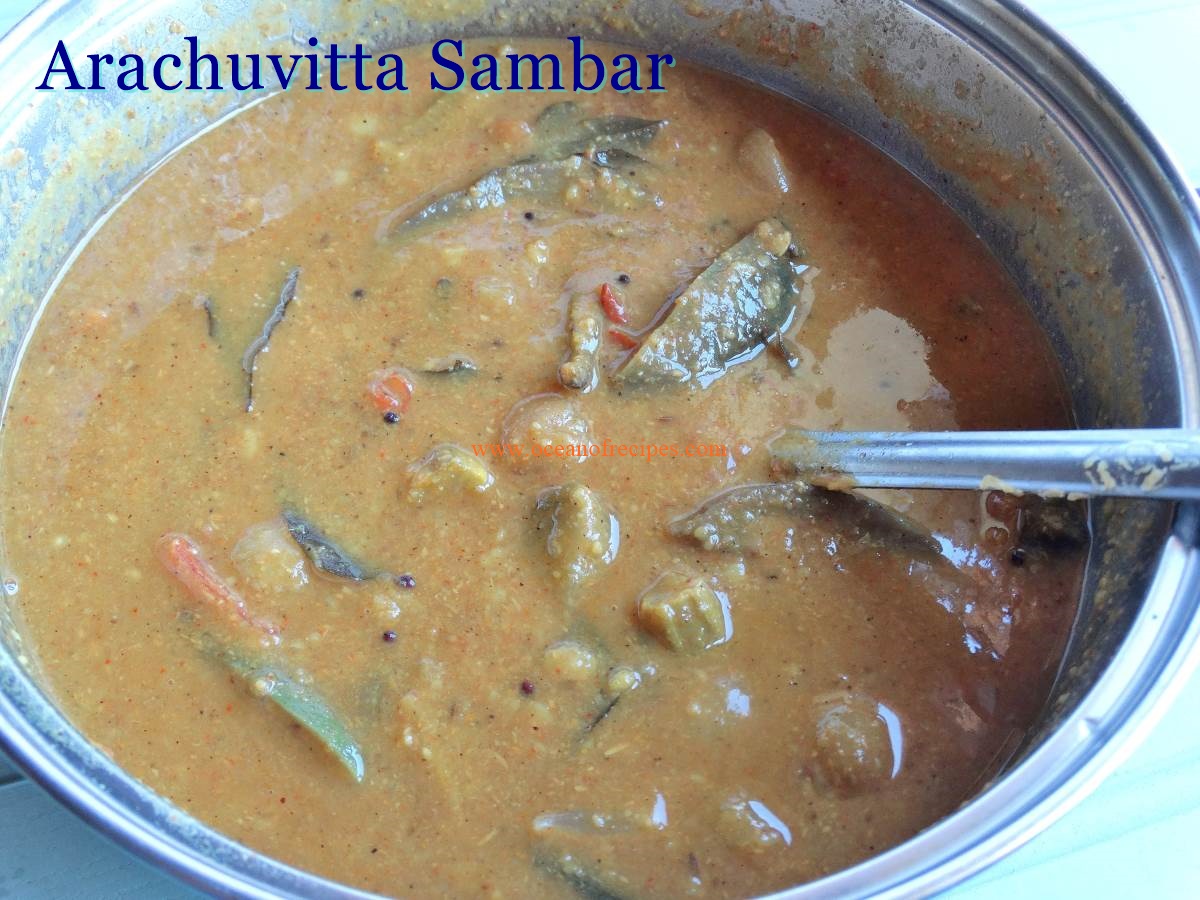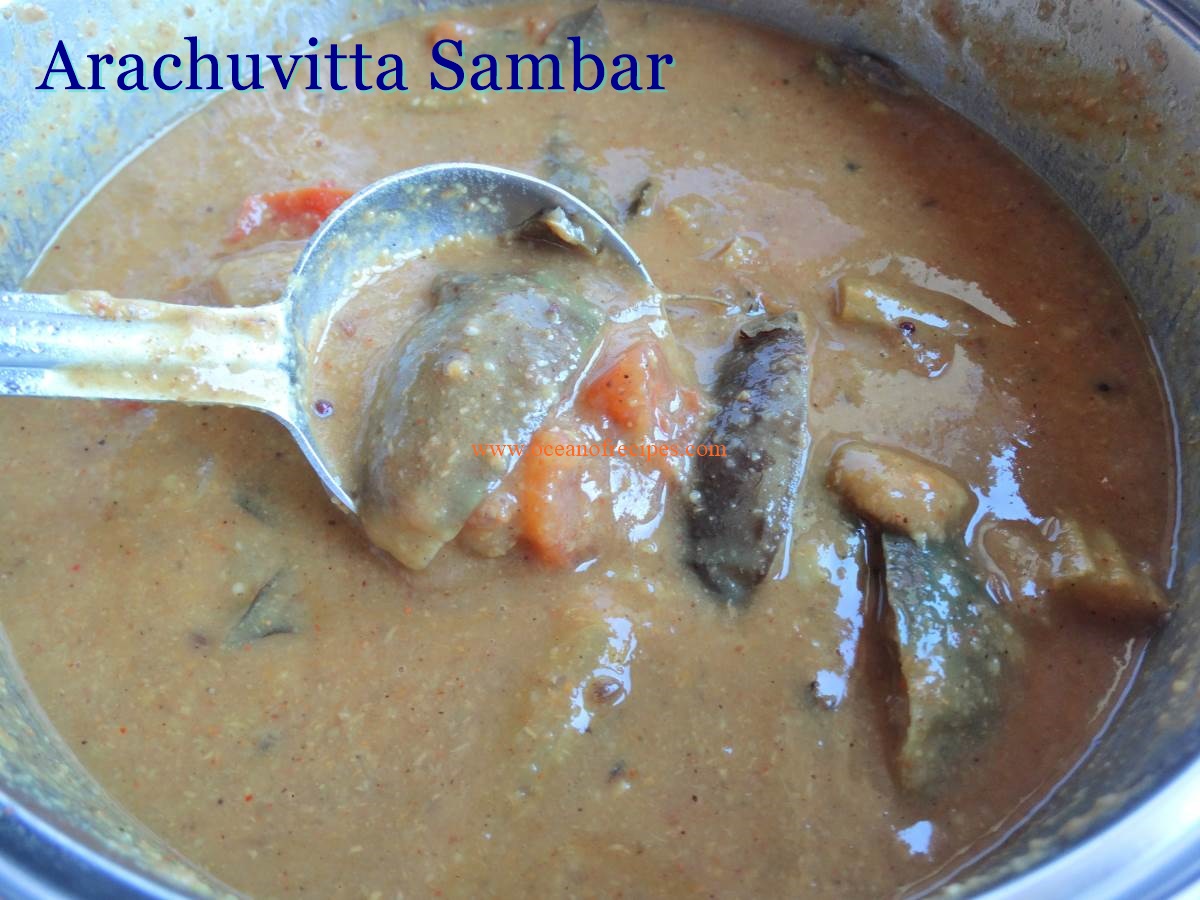Sambar is very important and a traditional diet food of Tamil Nadu cuisine. From breakfast to tiffin, sambar plays a vital role. Even during lunchtime, Sambar is served with rice. There are variety of sambar recipes, among them my favorite is Arachu vitta sambar, means (in Tamil word means to grind) freshly ground spice powder, which adds more flavor and taste to the sambar. Everybody has their own way of preparing sambar as per their taste and the vegetables they add.
The most common vegetable, which I prefer or I see mostly in restaurants are Drumstick and Brinjal. This time aim sharing Drumstick and Brinjal sambar( Murungakkai ,Kathirikai ) with freshly ground spice powder apart from using ready made shop bought sambar powder(MTR , Aachi or Shakti any brand). In every sambar I love to add small onions (kunjili or shallots or sambar onion) because of its sweet taste, it goes well in any sambar you prepare. Drumstick and Brinjal sambar you can serve with any South Indian breakfast you like and also for lunch with plain rice. This sambar is spicy compared to other sambar, you can reduce chilies as per taste. My comfort food is when I pour the sambar in bowl and immerse idlies in and drizzle ghee on top, it reminds me of Ratna café in Triplicane (CHENNAI), they pour the sambar on top of the idlies as you like.
Preparation time: 10 mins (excluding soaking dal)
Cooking time: 40 mins
Cuisine: Tamil Nadu
Spiciness: Medium
Serves: 5 to 6
For sambar masala (powder)
For boiling dal
For boiling vegetables
Tadka (tempering)
Boiling dal
Roasting and grinding for sambar masala
Tadka (tempering) and cooking vegetables























